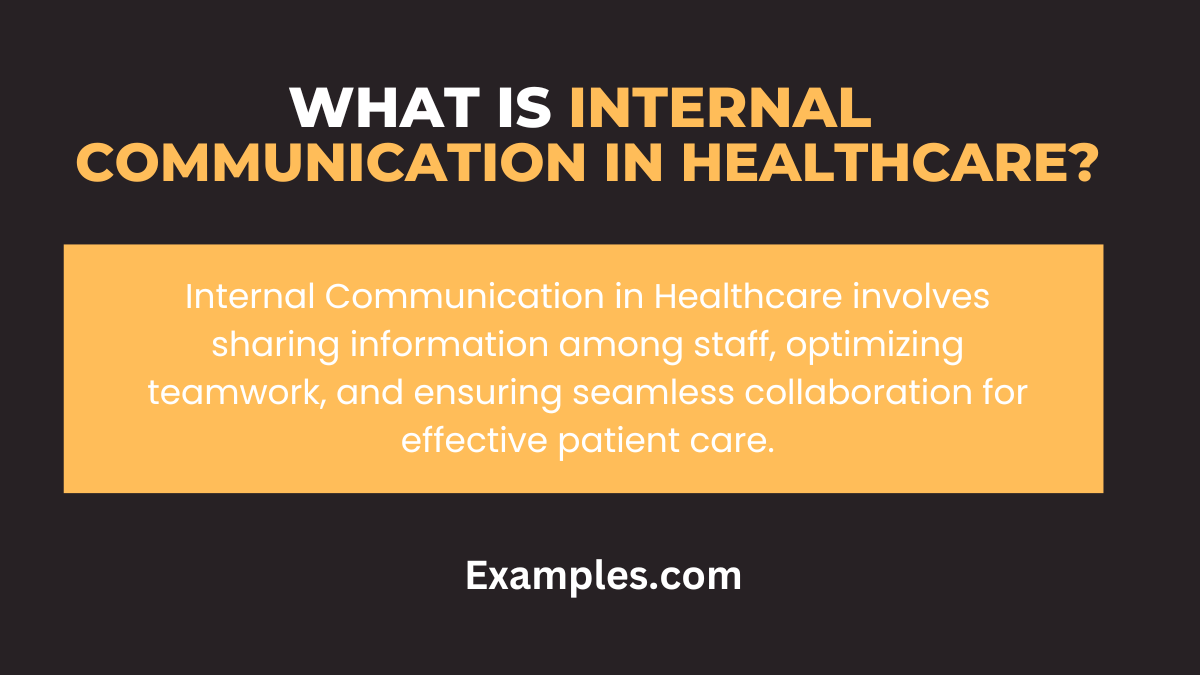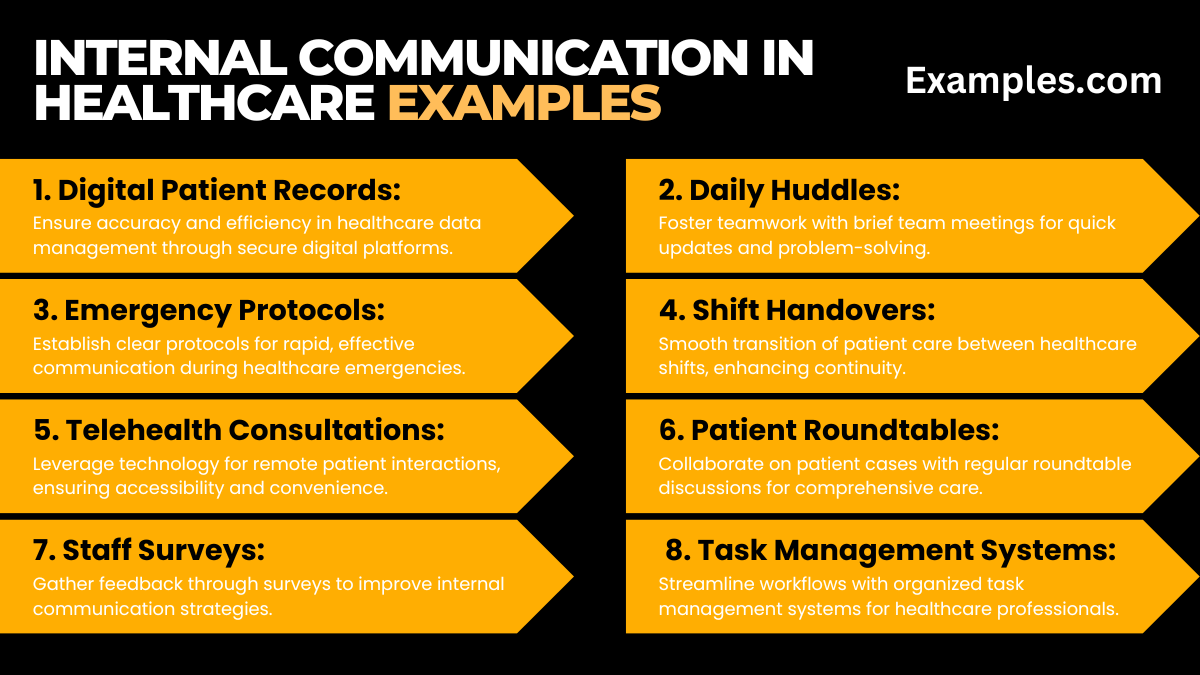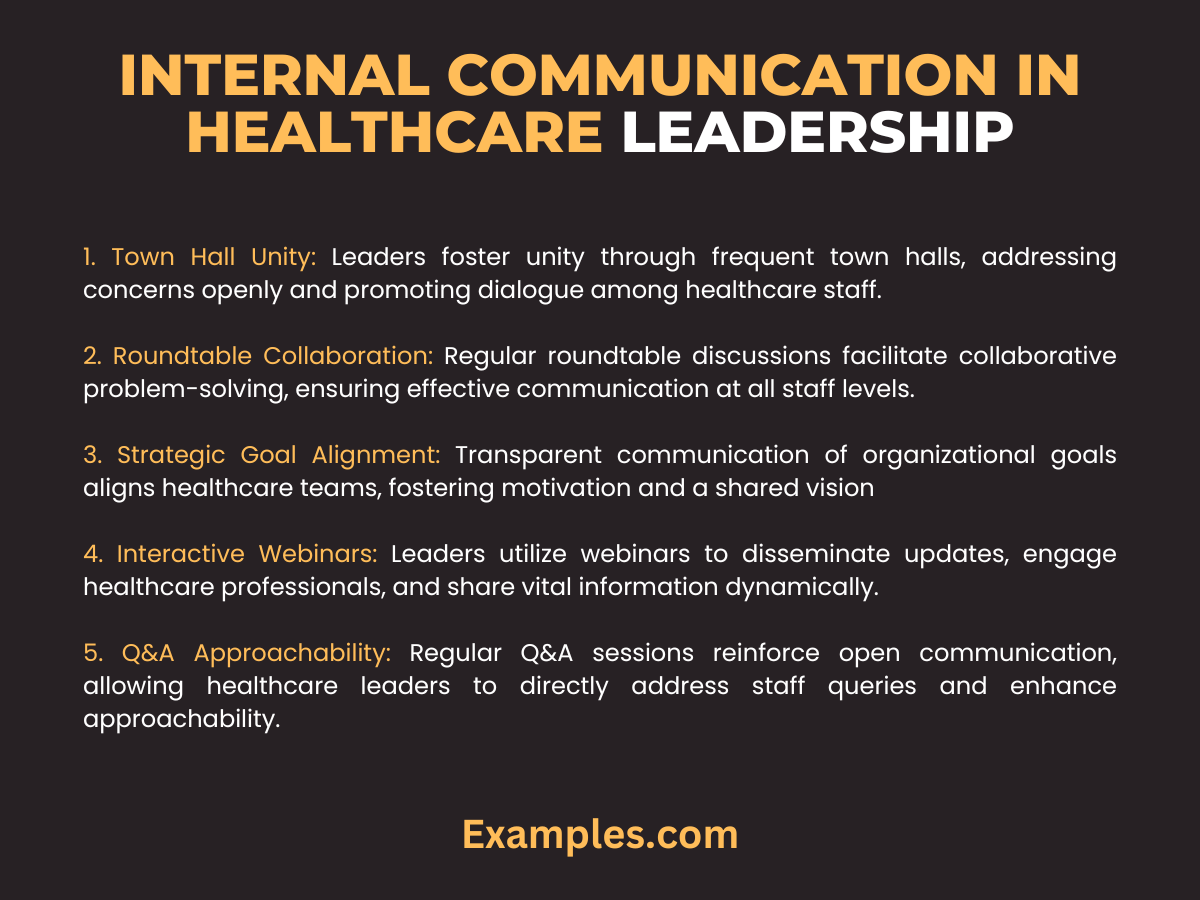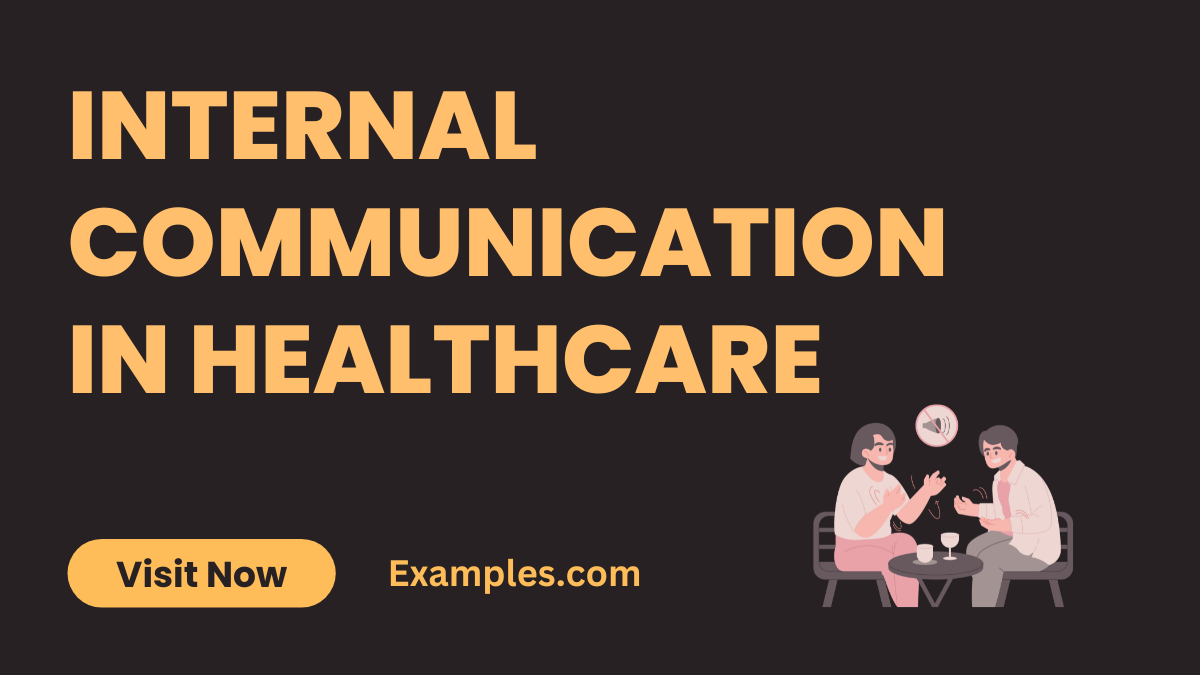20 Internal Communication in Healthcare Examples
Welcome to the definitive guide on Internal Communication in Healthcare! Unlock the secrets to seamless collaboration and teamwork within healthcare settings with our comprehensive insights. This guide goes beyond theory, providing tangible examples that showcase effective Communication. Elevate your healthcare practice by learning from real-world scenarios, mastering Communication Skills, and implementing proven strategies. Explore the transformative power of Internal Communication, complemented by vivid Communication Examples that illuminate the path to success in the healthcare domain.
What is Internal Communication in Healthcare?

Internal Communication in Healthcare refers to the exchange of information within a healthcare organization. It encompasses the flow of messages, data, and feedback among staff members, ensuring a cohesive and collaborative environment. This vital process is fundamental for seamless operations, team coordination, and ultimately, providing optimal patient care. In simple terms, it’s the effective sharing of information within the healthcare setting to enhance teamwork, streamline processes, and uphold the highest standards of patient well-being.
What is the best Example of Internal Communication in Healthcare?
In exemplary instances of Internal Communication in Healthcare, consider the implementation of a secure and user-friendly digital platform for sharing patient information among medical professionals. This advanced system ensures swift, accurate, and confidential data exchange, fostering efficient collaboration among healthcare teams. With real-time updates, streamlined communication, and enhanced accessibility, this cutting-edge solution exemplifies the epitome of Internal Communication in Healthcare, significantly elevating patient care standards and operational efficiency within the healthcare organization.
20 Internal Communication in Healthcare Examples:

From digital platforms facilitating seamless data exchange to daily huddles promoting team collaboration, each instance is meticulously curated for optimal impact. Dive into this rich compilation, where each example is not just a scenario but a testament to the transformative power of clear and cohesive communication in elevating healthcare practices.
- Digital Patient Records: Ensure accuracy and efficiency in healthcare data management through secure digital platforms.
- Daily Huddles: Foster teamwork with brief team meetings for quick updates and problem-solving.
- Emergency Protocols: Establish clear protocols for rapid, effective communication during healthcare emergencies.
- Shift Handovers: Smooth transition of patient care between healthcare shifts, enhancing continuity.
- Telehealth Consultations: Leverage technology for remote patient interactions, ensuring accessibility and convenience.
- Patient Roundtables: Collaborate on patient cases with regular roundtable discussions for comprehensive care.
- Staff Surveys: Gather feedback through surveys to improve internal communication strategies.
- Task Management Systems: Streamline workflows with organized task management systems for healthcare professionals.
- Team-building Workshops: Strengthen bonds among healthcare teams with engaging and informative workshops.
- Patient Education Programs: Communicate healthcare information effectively to patients through educational programs.
- Intranet Messaging: Utilize secure intranet systems for instant messaging among healthcare staff.
- Cross-departmental Collaboration: Encourage communication and collaboration between different healthcare departments.
- Policy Update Emails: Ensure all staff is informed about policy changes through regular email updates.
- Interdisciplinary Meetings: Promote collaboration among various healthcare disciplines for comprehensive patient care.
- Effective Email Communication: Master the art of clear and concise email communication within the healthcare setting.
- Staff Recognition Programs: Acknowledge and appreciate healthcare professionals for their contributions.
- Continuing Education Sessions: Facilitate ongoing learning opportunities to keep healthcare staff updated.
- Patient-Centered Care Planning: Involve patients in care planning, fostering transparent communication.
- Performance Feedback Sessions: Conduct regular feedback sessions to enhance individual and team performance.
- Transparent Leadership Communication: Embrace open communication from leadership to foster a positive work environment
Internal Communication in Healthcare Leadership

Discover the pivotal role of Internal Communication in Healthcare Leadership. Unveil strategies that leaders employ to enhance teamwork, promote transparency, and drive a culture of excellence within healthcare organizations.
- Regular Town Hall Meetings: Leaders conduct frequent town hall sessions, fostering open dialogue, and addressing concerns directly, creating a sense of unity among healthcare staff.
- Leadership Roundtable Discussions: Organizing regular roundtable discussions allows leaders to collaboratively address challenges, share insights, and ensure effective communication at all levels.
- Strategic Goal Communication: Leaders communicate organizational goals transparently, aligning healthcare teams with a shared vision and motivating them toward common objectives.
- Interactive Webinars: Hosting interactive webinars enables leaders to disseminate important information, share updates, and engage healthcare professionals in a dynamic online setting.
- Leadership Q&A Sessions: Promoting regular Q&A sessions allows healthcare leaders to directly address staff queries, reinforcing a culture of open communication and approachability.



